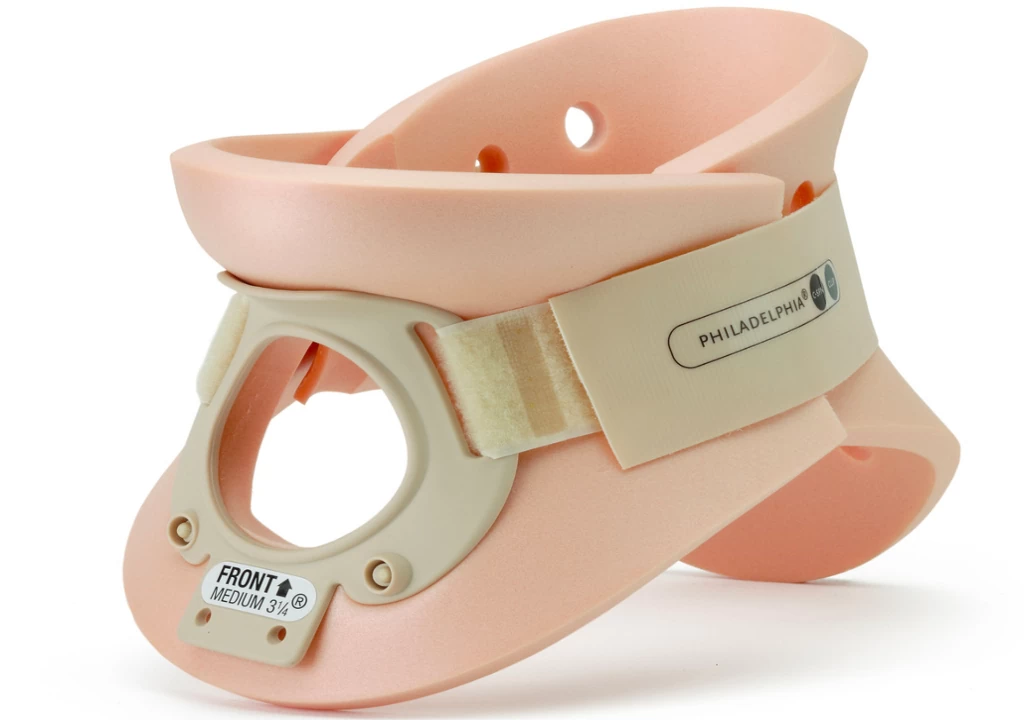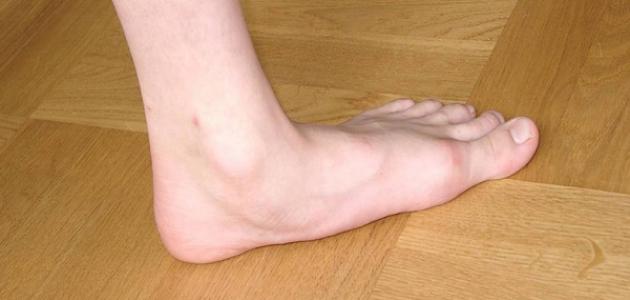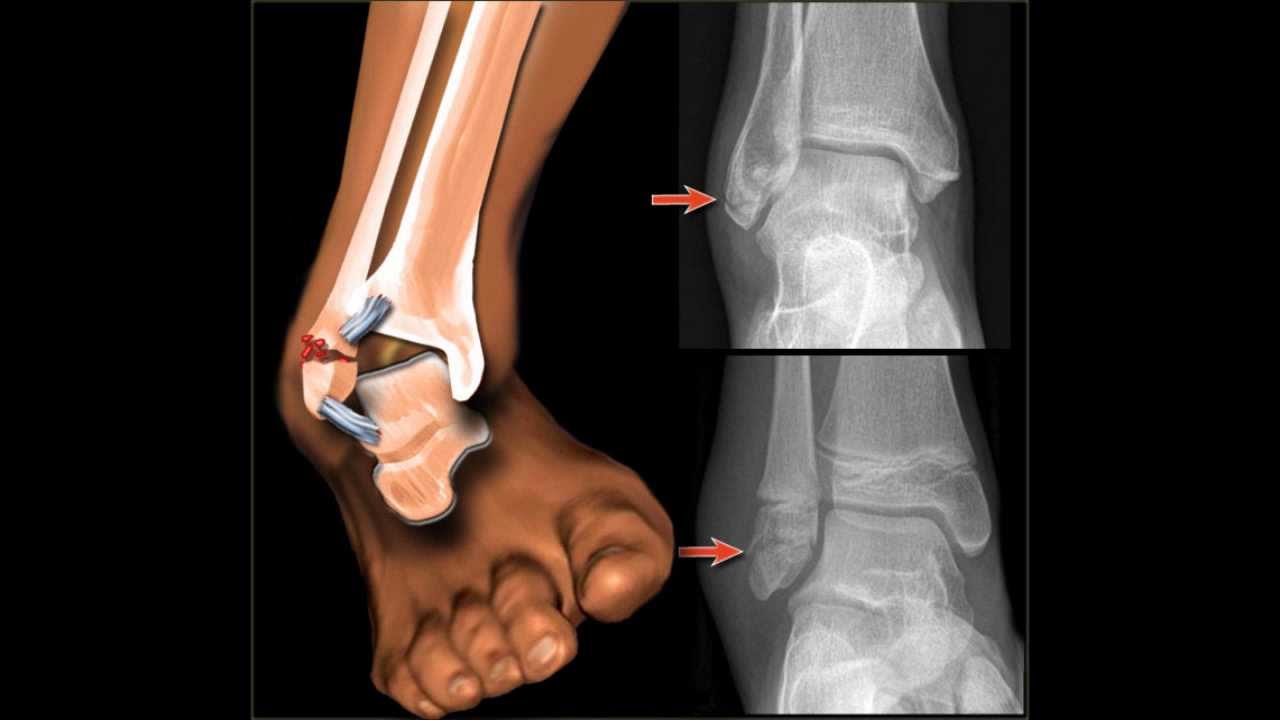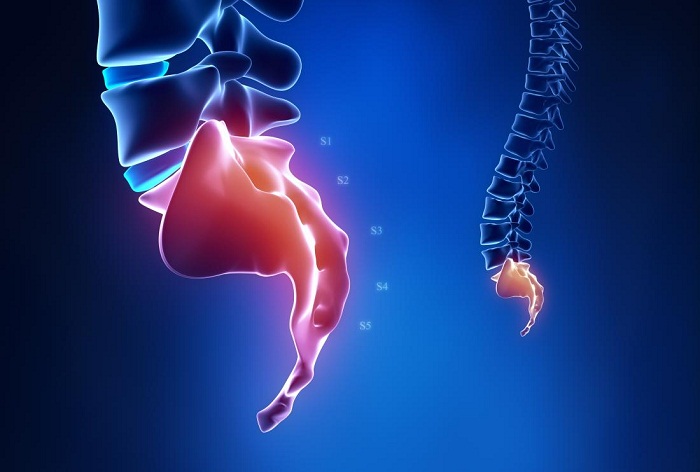Types of medical neck braces: How long should they be worn, and what are the diseases that affect the neck?
Types of Medical Neck Braces
Medical neck braces are essential tools in the treatment and stabilization of neck pain. There are various types of medical neck braces available at different prices and locations for purchase. Medical neck braces are used to treat pain resulting from improper sleeping or sitting posture and to provide stability to the neck in the same position for an extended period. There are four main types of medical neck braces:
- Soft Collar: This type of medical neck brace is used to treat pain caused by tension or strain in the neck. It is suitable for daily use and provides flexible and comfortable neck support.
- Rigid Collar: Rigid medical neck braces are used in cases of mild to moderate neck injuries. They are beneficial for conditions like neck tilt, neck stiffness, neck pain, cervical disc problems, neck sprains, and post-surgery recovery.
- Adjustable Cervical Collar: This type of medical neck brace is flexible and adjustable, allowing patients to customize it according to their needs and the level of support required for their neck.
- Tracheotomy Collar: Tracheotomy collars are used in cases of tracheostomy and laryngeal cleft, providing the necessary support and stabilization for the neck.
These different types of medical neck braces are available at various commercial locations in Egypt, and they can be found at different price points. Some of these sources offer free shipping for orders exceeding 350 Egyptian pounds within Cairo.
How long should a medical neck brace be worn?
A medical neck brace, also known as a cervical collar, is used to support the cervical spine and head in cases of muscle strain or cervical spine misalignment. These braces are a common therapeutic option for various neck conditions, including neck injuries, cervical spine surgeries, and certain neck pain conditions.
However, the question arises regarding how long a medical neck brace should be worn to achieve the desired results and alleviate pain. It’s important to understand that a medical neck brace is not the sole treatment required for recovery and pain relief in the neck. It is a part of a comprehensive treatment plan that may also include physical therapy, therapeutic exercises, and rest.
There are some general guidelines for the duration of wearing a medical neck brace, but the appropriate duration should be determined based on an individual’s condition and the recommendations of the treating physician. Typically, patients are directed to wear a medical neck brace for a limited duration ranging from a few days to a few weeks, depending on the person’s condition and progress of recovery. It should be noted that prolonged reliance on a medical neck brace can lead to weakening of the neck muscles and a reduced ability to naturally support and stabilize the cervical spine. Therefore, it is advisable to consult with the treating physician to determine the appropriate duration for wearing the medical neck brace and to establish suitable intervals for rest and therapeutic exercises.
The medical neck brace should be worn according to the instructions provided by the treating physician and should be used cautiously, avoiding improper use or extended periods of use without medical consultation. In general, maintaining gentle movement rather than prolonged rest or sitting for extended periods while wearing the medical neck brace is recommended. Gentle activities such as walking can help prevent neck muscle stiffness and promote healing.
It’s worth noting that using a medical neck brace may involve some potential risks and side effects. Safety concerns may include airway obstruction when improperly using the neck brace, increased pressure in the head, and elevated blood pressure in the carotid artery. Therefore, consulting with the treating physician before using a medical neck brace and following their guidance carefully is crucial.
In conclusion, adhering to the instructions of the treating physician and working on strengthening neck muscles through physical therapy and prescribed exercises are essential. Recovery and complete relief from neck pain may take approximately 6 to 8 months, but this depends on individual circumstances and the progress of healing.
Ultimately, it is essential to continue receiving regular medical care and follow-up for the condition. Compliance with the instructions of the treating physician and efforts to promote healing and strengthen neck muscles are necessary to achieve desired outcomes and long-term relief from neck pain.
When Should You Wear a Neck Brace?
Neck braces are used in various cases to support and protect the neck. While they can help alleviate pain and stabilize the cervical vertebrae in the short term, prolonged use may lead to some drawbacks. Research has shown that long-term use of a neck brace can result in the weakening and stiffness of neck muscles.
In cases of acute injuries such as fractures or accidents, the use of a neck brace is essential to immobilize the neck and prevent further damage. However, if you are dealing with mild neck pain, you may want to reduce the amount of time you wear it or discuss alternative treatments with your doctor.
Medical neck braces are used to reduce strain and stabilize the cervical vertebrae. They are typically used in cases of disc displacement, cartilage movement, or neck injuries. Many types of medical neck braces are available in the market, featuring top international brands at affordable prices in Egypt and the Arab world.
It is advisable to sleep on your back to minimize pain and pressure on the neck vertebrae and aid in recovery. You can use foam or plastic neck braces to restrict movement and reduce pain. The appropriate type of medical neck brace for your condition, the duration of wear, and when to remove it for rest and pressure reduction should be determined by your doctor.
Medical neck braces can be used to treat neck pain associated with inflammations or joint degeneration. However, consulting a doctor before using them to diagnose your condition and determine the appropriate type and duration of wear is crucial. In summary, neck braces can be used in various cases to support and protect the neck. Consulting a doctor is necessary to determine the need for a neck brace, its type, and the appropriate duration of wear for your condition. Medical neck braces can help alleviate pain and stabilize cervical vertebrae, but they should be used cautiously and under medical supervision.
What Are the Diseases that Affect the Neck?
The neck is an essential part of the body that plays a crucial role in supporting the head and enabling neck movement and the spinal column. However, the neck is susceptible to injuries and medical conditions that can cause pain and restrict movement. Here are some diseases that may affect the neck:
- Muscle Strain: Neck muscle strain can occur due to excessive use of the neck, such as prolonged improper sitting in front of a computer or smartphone. Simple activities like reading a book in bed can lead to neck muscle strain.
- Cervical Arthritis: Cervical arthritis is one of the most common causes of neck pain. This inflammation results from joint damage and wear and tear in the neck due to aging or excessive stress.
- Cervical Disc Herniation: Cervical disc herniation occurs when the intervertebral disc between cervical vertebrae moves out of place. This can put pressure on the nerves in the neck, causing severe pain and numbness in the arms and shoulders.
- Tendonitis: Neck tendonitis can result from inflammation or excessive stress on tendons. It can cause acute pain and muscle contractions in the neck.
- Slipped Disc: A slipped disc occurs when the cartilage between cervical vertebrae moves out of place. This can compress nerves and lead to acute pain and numbness in the arms and legs.
- Nerve Inflammation: Nerve inflammation in the neck can result from infections or injuries. It can cause severe pain, numbness in the arms and legs, and loss of sensation in the feet.
- Neck Tumors: In rare cases, tumors may develop in the neck, causing pain and restricting neck movement. These tumors can be either malignant or benign.
It’s essential to understand that any neck pain requires medical care. If the pain persists for several days without improvement or is accompanied by symptoms such as headaches, numbness, and weakness, it is advisable to consult a doctor for an evaluation and appropriate treatment.
Additionally, avoiding improper body postures and maintaining proper body alignment, such as during driving or working on a computer, is essential. Focus on maintaining correct body posture and engaging in appropriate physical exercises to strengthen neck muscles and preserve neck health.
In conclusion, the neck is a vital part of the body that requires care and attention. If you experience neck pain or any unusual symptoms, it is recommended to visit a doctor for a diagnosis and receive suitable treatment.
What Are the Benefits of a Medical Neck Brace?
The benefits of a medical neck brace are focused on several important aspects. One of its most important benefits is stabilizing neck movement, reducing neck motion, and immobilizing it in a specific position. This helps reduce pressure on the spine, nerves, and muscles in the neck, thereby alleviating neck pain.
A medical neck brace also helps in warming the muscles surrounding the neck due to the materials it is made of, which retain heat and enhance blood flow to the area. This improves blood circulation and muscle nourishment, helping to relieve tension, spasms, and pain.
Additionally, a medical neck brace is useful for supporting the weight of the head, as the head is relatively heavy on the neck. Thanks to the support provided by the neck brace, weight is distributed better, reducing pressure on the neck. This helps in reducing neck pain and tension and contributes to improving body posture.
Furthermore, the benefits and uses of a medical neck brace vary depending on its types. Among these uses, it can be employed in the treatment of various neck injuries such as neck sprains, strains, post-surgery neck stabilization, cervical osteoarthritis pain relief, and even during recovery after cervical spine surgeries.
In conclusion, a medical neck brace is an important tool in treating neck pain, immobilizing neck movement, and warming the muscles around the neck. Its benefits and uses vary depending on the type and the patient’s condition, so consulting a specialist doctor is essential before using it.
Is Neck Surgery Risky?
Neck spine surgery is a surgical procedure aimed at addressing spinal problems in the neck area. This surgery does come with potential risks, but the potential benefits of the surgery versus the potential risks should be evaluated before deciding to undergo it.
Common risks of neck spine surgery include complications such as post-operative pain and weakness, the need for additional surgical procedures, and the possibility of serious nerve or spinal cord injuries. Some patients may also experience problems or complications resulting from the body’s reaction to anesthesia medications.
While neck spine surgery has a relatively high success rate, there is a risk of extremely serious complications occurring. These complications can include persistent pain, permanent weakness, and the need for additional surgical procedures.
There is also a set of rare risks associated with cervical disc replacement surgery, such as reduced range of motion in the neck due to artificial disc calcification and disc dislocation.
It is important that the individual case of each patient be evaluated, and consultation with the treating physician should take place before deciding to undergo neck spine surgery. The potential benefits of the surgery and improving health conditions should be weighed against the potential risks and complications.
In summary, patients considering neck spine surgery should consult their treating physician and raise all questions and concerns they may have. The doctor can provide the necessary advice and guidance based on the individual’s condition, risk assessment, and potential benefits and complications.
Can You Sleep with a Neck Brace?
Sleeping is an important part of human life, as it helps in replenishing energy and rejuvenating the body and mind. One of the factors that significantly affects the quality of sleep is the sleeping position. Common sleeping positions include sleeping on the back, stomach, or side.
Some individuals may experience neck and spinal problems, and sleeping with a neck brace may be beneficial for them. The brace helps immobilize the neck and provides necessary support for the spine during sleep. Consequently, using a neck brace while sleeping may lead to improved sleep posture, pain relief, and reduced neck and spine tension.
However, there are some things to consider when using a neck brace while sleeping. Firstly, it’s essential to choose the right type of neck brace that fits the neck size and provides the necessary support. Secondly, adjusting the brace correctly is crucial to ensure that it provides the necessary support without causing excessive pressure on the neck.
Is a Medical Neck Brace Sized?
A medical neck brace, also known as a cervical collar, is a supportive device used to provide support and alleviate pain in the cervical spine. Medical neck braces come in four different sizes: S – M – L – XL. But how can we determine the right size for us?
Before discussing how to determine the size, let’s take a look at some basic information about the Soft Medical Neck Brace. This brace is a product from Dr. Med, a Korean company, designed specifically for treating cervical disc degeneration and reducing neck pain. Additionally, wearing the medical neck brace helps reduce the load on the neck and promotes blood circulation in this area.
Now, for determining the right size for the Soft Medical Neck Brace, you should measure the length of your neck. The size M comes with a length of 23.20 inches and fits neck lengths between 13-18 inches. The neck circumference can be adjusted to fit individual preferences.
The Soft Medical Neck Brace is characterized by being made of soft and smooth sponge material that provides maximum comfort between the chin and jaw. It is ideal for use in cases of neck sprains, post-surgery rehabilitation, and stress. For purchasing, the Soft Medical Neck Brace can typically be found on the Doctors.com website and Amazon. It is usually shipped within 2 to 3 days. It can also be bought from an Amazon warehouse and shipped by On the door.
The Soft Medical Neck Brace comes with several features and characteristics. It can be worn while sleeping, working, and engaging in daily activities. The soft collar can be wrapped around the neck to provide limited control over neck movement. It offers medium support for the injured neck, both day and night. Due to its lightweight nature, it does not strain the spine or back. The Soft Medical Neck Brace is manufactured from high-quality medical fabrics that do not cause allergies or infections. It can be cleaned with soap and water by hand to maintain cleanliness. The neck brace can be used post-surgery and to relieve muscle tension in the neck.
In summary, the Soft Medical Neck Brace is an effective support for treating neck pain and providing the appropriate support. The right size can be determined by measuring neck length. It can be worn during sleep, work, and sports activities. The Soft Medical Neck Brace offers medium support and helps stimulate blood circulation while reducing muscle tension in the neck.
Can You Recover from Cervical Disc?
Cervical disc degeneration is a common condition that occurs when the intervertebral disc in the cervical spine (neck) becomes damaged. Many patients wonder if they can fully recover from this painful condition. Unfortunately, it cannot be said that cervical disc degeneration can be completely cured.
The severity of symptoms associated with cervical disc degeneration varies from person to person. Some may experience short-term pain that lasts only a few days, while others may suffer from chronic pain that persists for several months. Pain may also be associated with specific activities that trigger severe pain episodes.
There are several treatment options available to alleviate pain caused by cervical disc degeneration. Treatment aims to relieve pain and reduce pressure on the nerves. Rest, medications, and physical therapy can be used to achieve this. Warm compresses can also be used to relieve muscle spasms and pain. Massage therapy can increase blood flow to the affected area and relieve muscle tension.
Physical therapy for the neck may be required in some cases. Surgery may also be necessary for severe cervical disc cases. There are also tips for managing pain caused by cervical disc degeneration. It is important to treat the condition early to avoid worsening of symptoms and reduce the risk of complications. Consulting a doctor to assess the condition and prescribe appropriate treatment is important. Following the doctor’s advice and prescribed exercises is also essential.
In general, treatment for cervical disc degeneration should be tailored to each individual case. Symptoms should be evaluated, and the most suitable treatment should be determined for each person. Treatment may take a long time and require ongoing cooperation between the patient and the medical team to achieve the best results. Overall, patients suffering from cervical disc degeneration should handle pain with caution. Activities that exacerbate pain should be avoided, and adequate rest should be ensured. Following the prescribed exercises and medical advice is crucial for managing the condition and improving the quality of life.
The Best Doctor for Cervical Disc Treatment
Dr. Amr Amal is one of the top doctors specialized in cervical disc treatment in Egypt. Dr. Amr possesses key qualities that set him apart in his field and make him beloved by patients suffering from this painful condition.
First and foremost, Dr. Amr has extensive experience in the field of orthopedics and surgery, with over 15 years of experience in this field. This wide-ranging experience enables him to efficiently deal with various cases of cervical disc herniation. He also has the ability to diagnose complex cases and find the most suitable treatment solutions for each case.
Secondly, Dr. Amr is considered a reference point for many patients suffering from cervical disc herniation. He provides his medical services using the latest available medical methods to alleviate pain and improve the lives of patients with this condition. Additionally, Dr. Amr offers a range of tips and instructions to help patients reduce pain during the treatment period and work towards improving the final outcome.
Seeking the expertise of Dr. Amr Amal is the optimal and most effective choice for overcoming cervical disc herniation and the accompanying pain. Dr. Amr practices at Dar Al Fouad Medical Center, 4th Floor, Room 418, Nasr City, Cairo.
Furthermore, Dr. Amr Amal serves as a faculty member at Ain Shams University, reflecting his high skills and expertise in the field of orthopedics and surgery. Dr. Amr Amal is recognized as an orthopedic surgery consultant and enjoys significant fame in Egypt and beyond due to his dedication and competence in assisting patients.
For more details about Dr. Amr Amal and the cost of the procedure, it is recommended to contact Dar Al Fouad Medical Center directly using the provided address.
In general, Dr. Amr Amal is considered one of the best options for treating cervical disc herniation in Egypt. He utilizes the latest techniques and modern methods to achieve the best results and alleviate the pain associated with this condition.




















